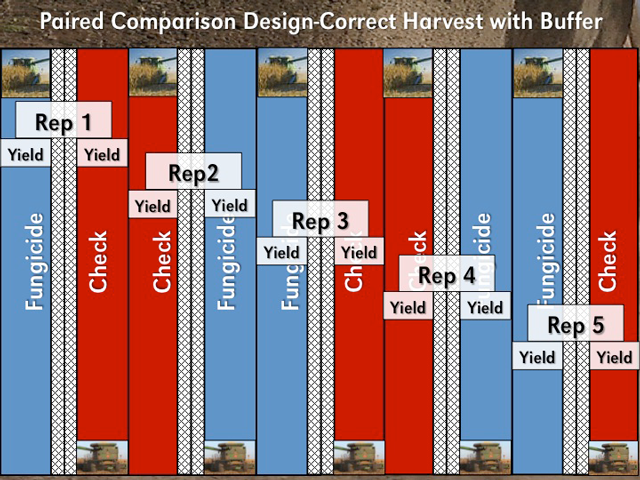To compare two treatments, such as no treatment and a fungicide application in V5 corn, you could use the paired comparison design. (See Figure 6.) The paired comparison needs a minimum of five replications to provide good confidence in the results. Six to seven replications are encouraged since a comparison field strip may be lost due to weather, pests, or human error in data collection.
Planting: The paired comparison design allows you to make a round with your equipment or two rounds if a buffer is needed. Buffer rows serve to shelter the middle rows of a treatment from the effects of neighboring treatments; for example, drift from pesticide or nutrient applications. Buffer rows are also referred to as guard rows or outer rows.
Harvest: In order for a paired comparison design to work, both strips from each treatment need to be harvested. If you planted with 16-row equipment, you will need to harvest with eight-row equipment to collect all yield data. If treatment A in this diagram is your fungicide treatment, you would harvest eight rows and that data would be compared to the next eight rows of the check treatment. Together treatment A and B create the first replication in your field. You would then harvest the next eight rows of the untreated check and compare that with the next eight rows of the fungicide treatment. That is the second replication (Rep 2). Continue these replications across the field. (See Figure 7.)

